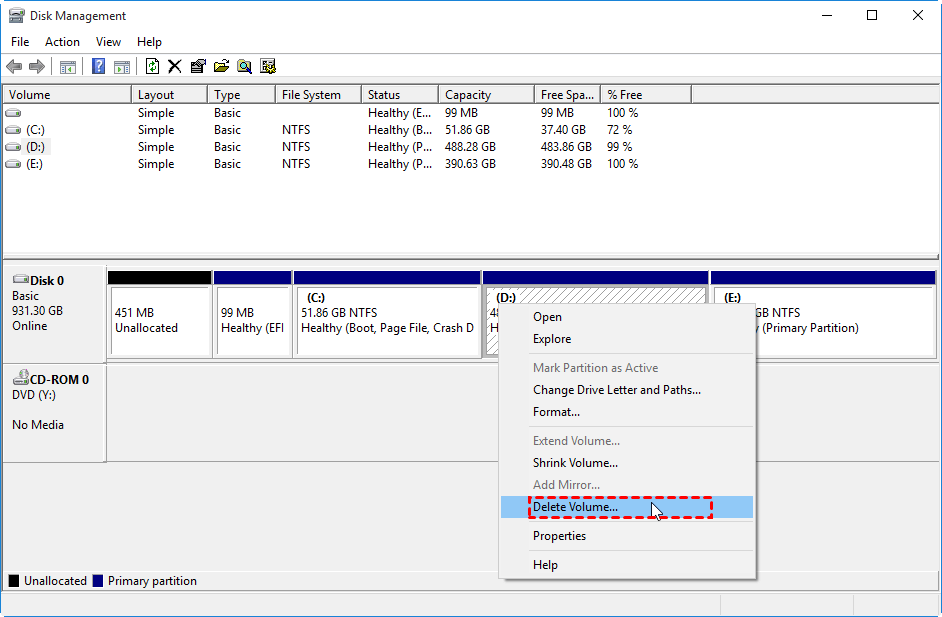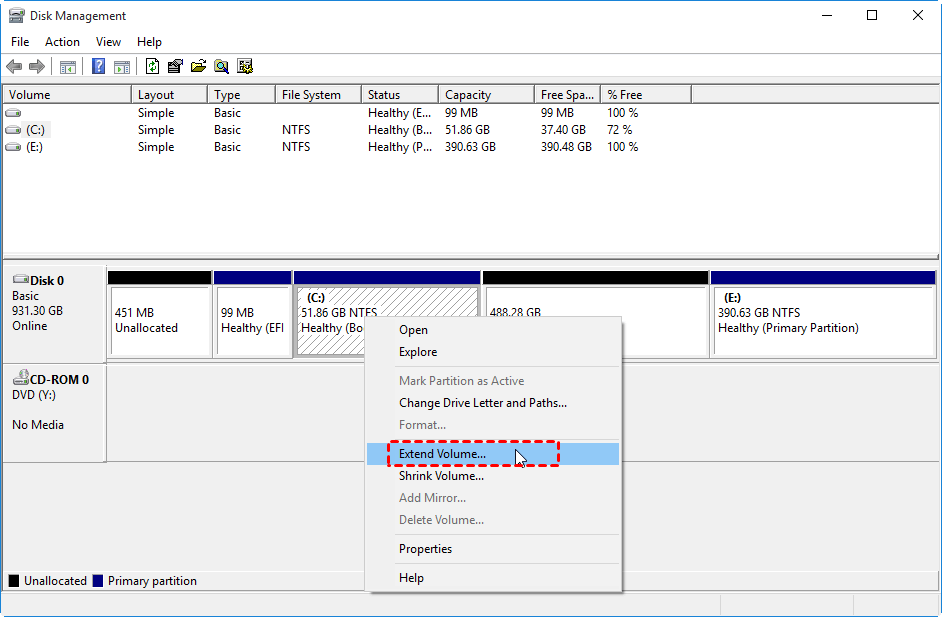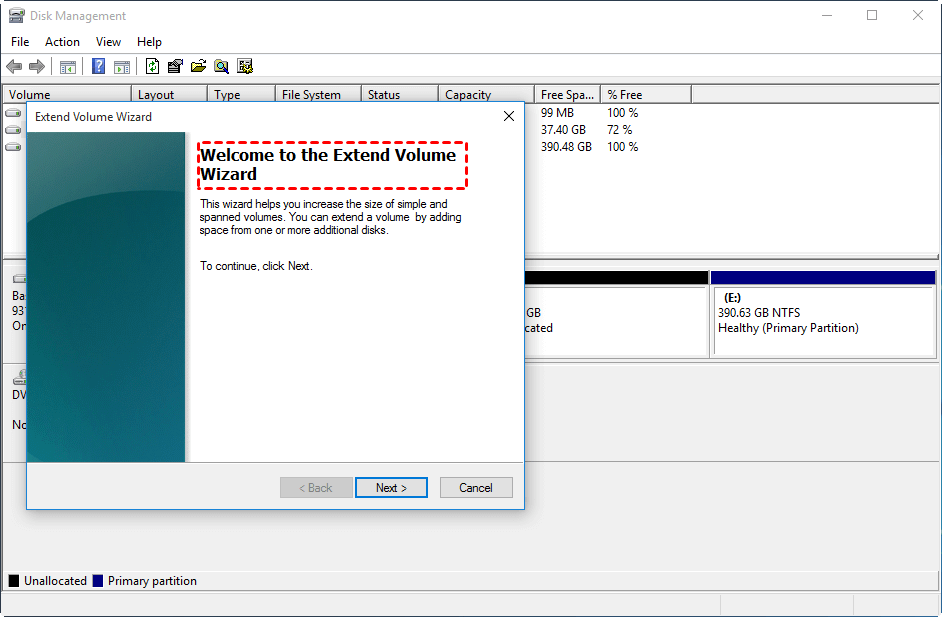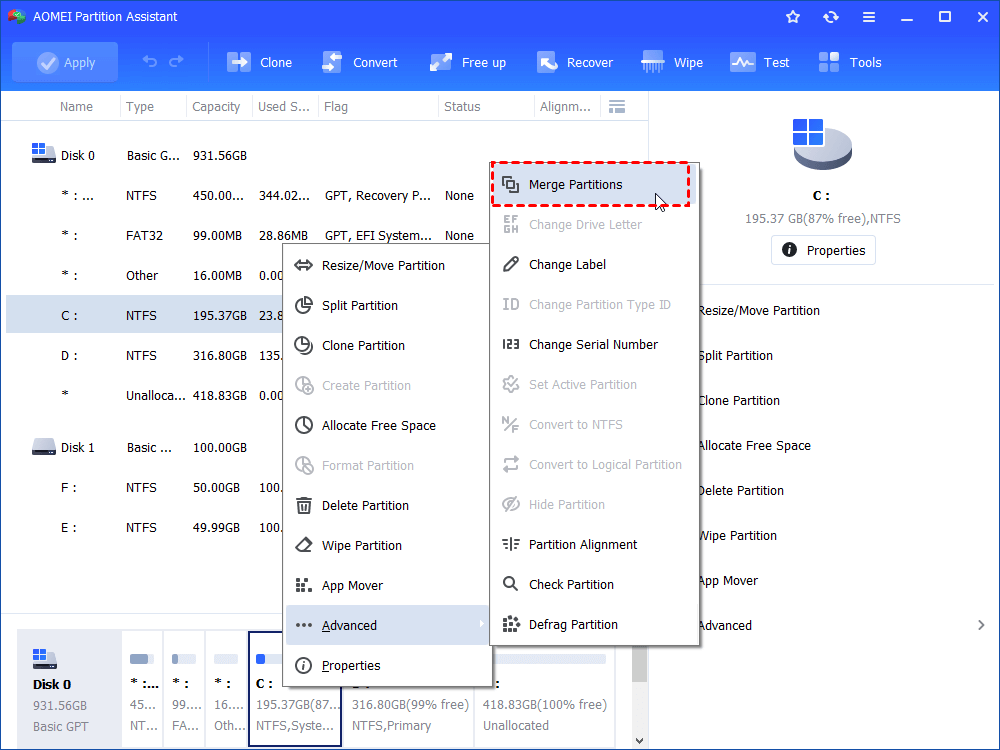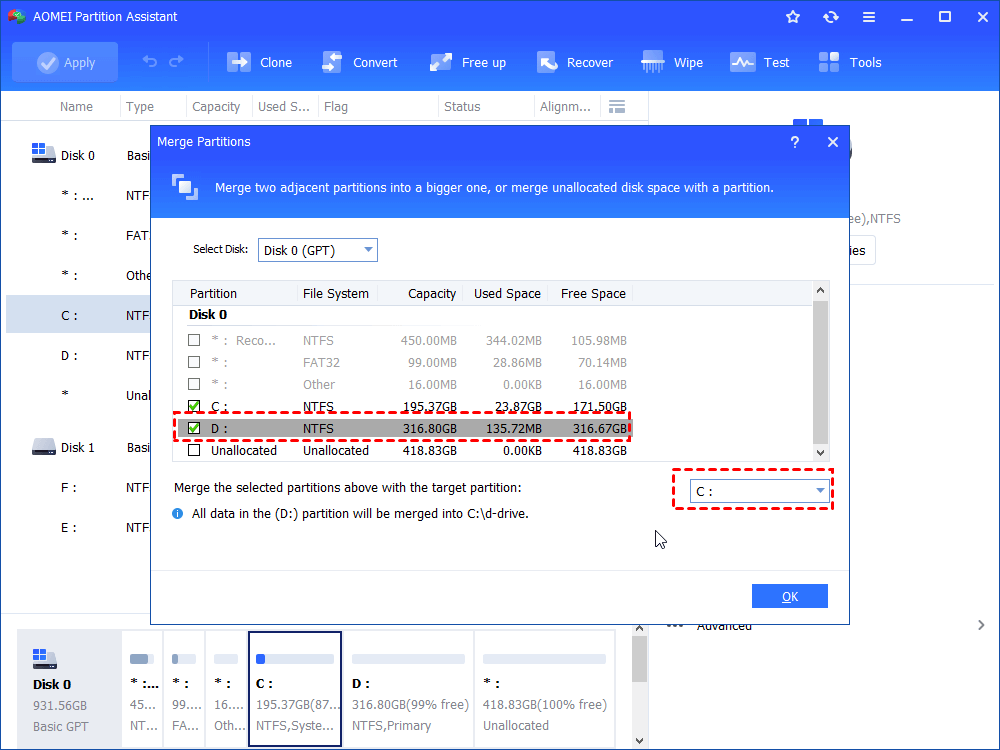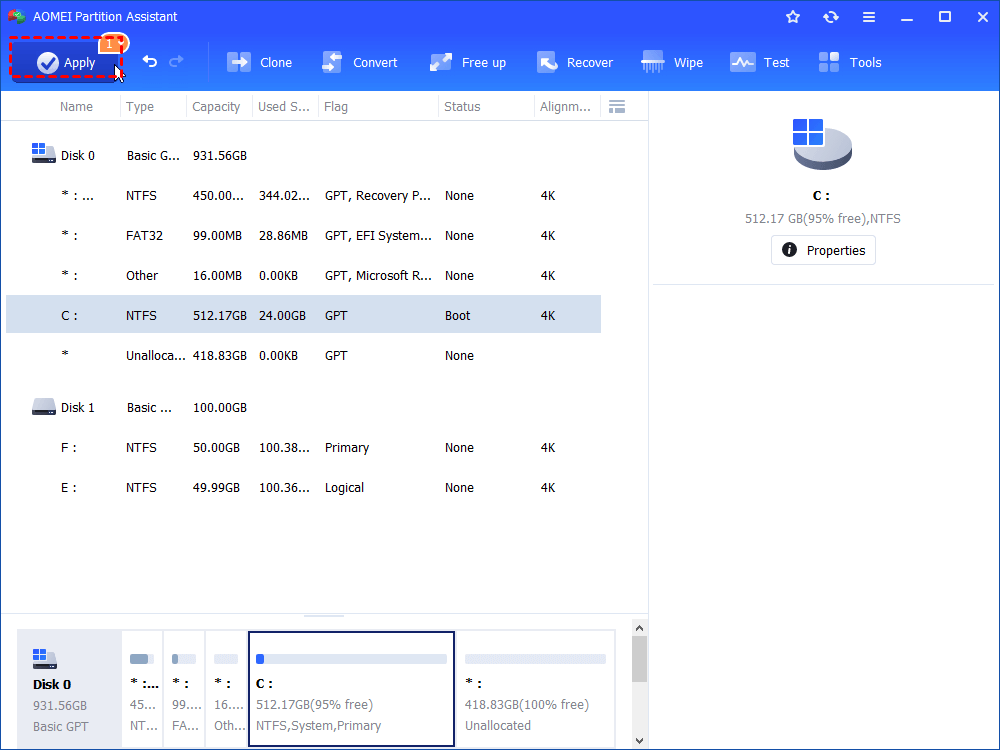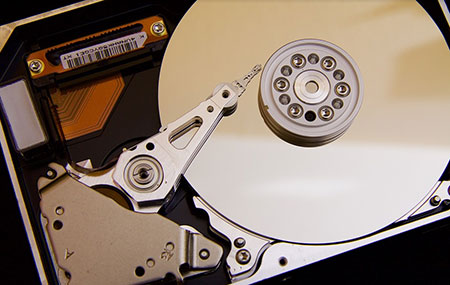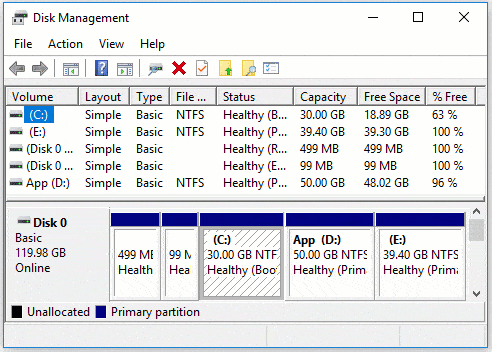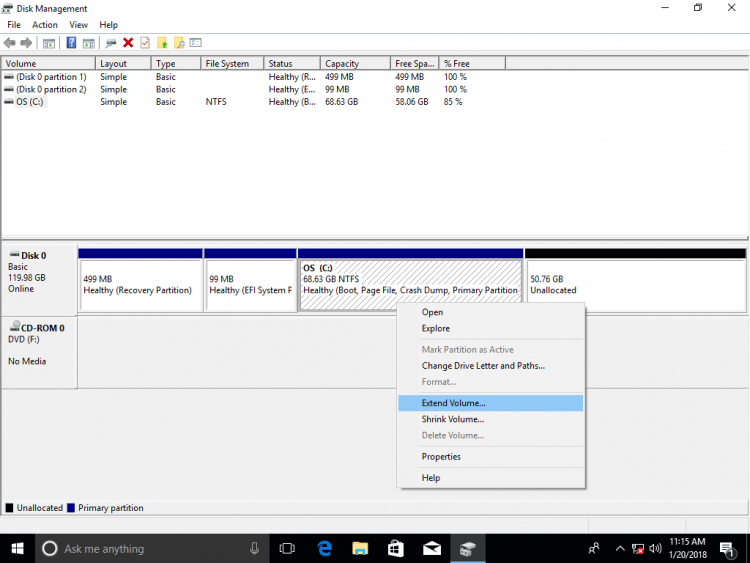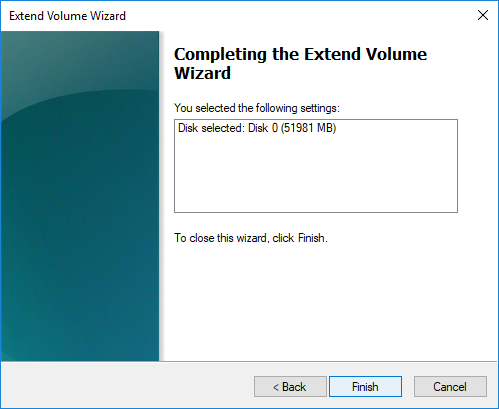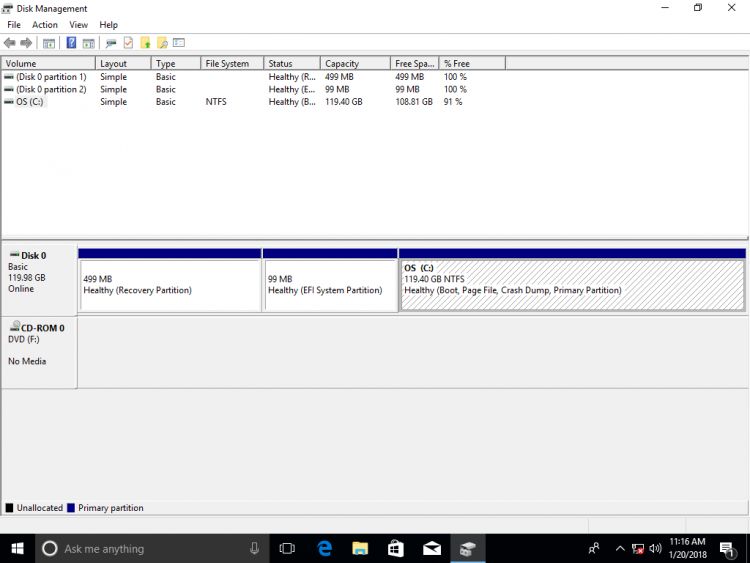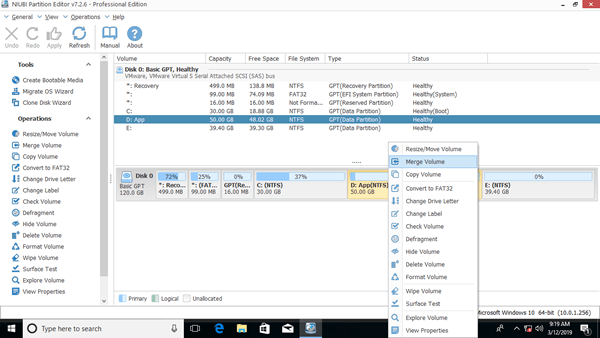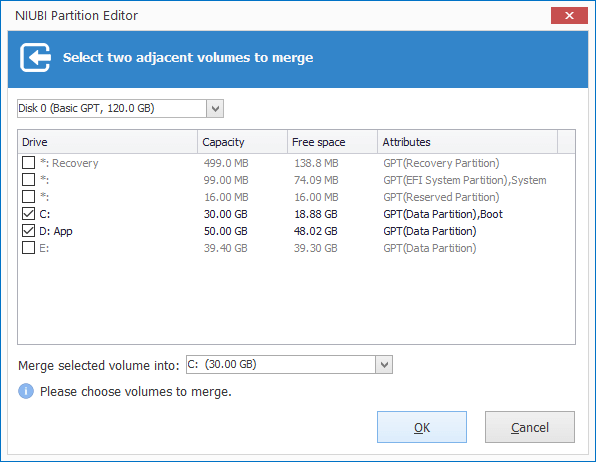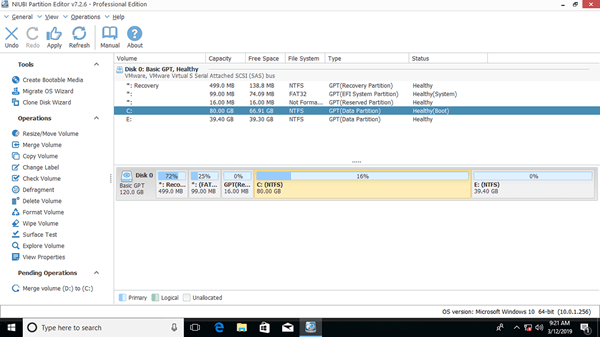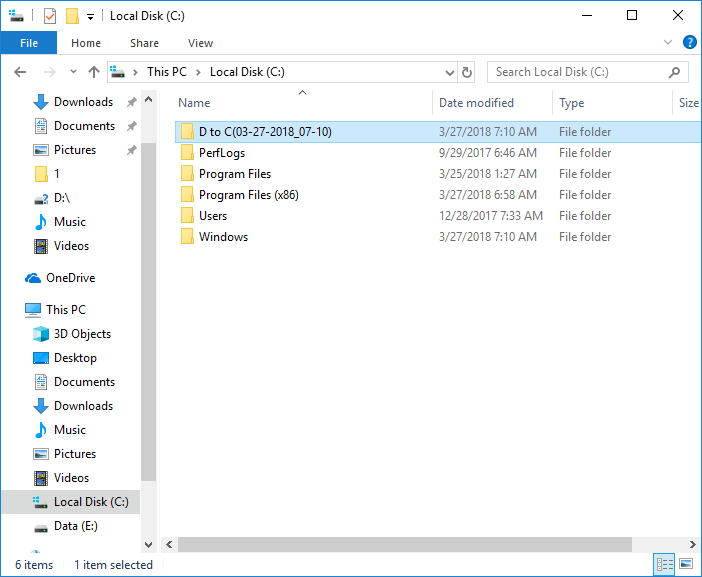- [FREE] 2 Ways to Merge Partitions in Windows 10 Effortlessly
- Why merge partitions in Windows 10?
- Free Merge partitions with Windows Disk Management
- Freeware: Merge Partitions in Windows 10 without Data Loss
- Conclusion
- How to merge Windows 10 partitions without losing data
- 3 ways to merge partitions in Windows 10/8/7 computer
- ① How to combine partitions in Windows 10 Disk Management
- ② How to merge partitions using Diskpart command
- ③ How to merge partitions with free partition editor software
- Shortages to merge 2 partitions in Windows 10/8/7
- About merging partitions on disk 0 and disk 1 (separate disk)
[FREE] 2 Ways to Merge Partitions in Windows 10 Effortlessly
If you want to merge and combine 2 partitions into 1 in Windows 10 without losing data, you can refer to this article to get step-by-step tutorial.
By AOMEI 
Why merge partitions in Windows 10?
Merging partitions refers to combine two partitions into one partition or combine a partition with unallocated space on hard drive to expand the space of a partition.В
For example, if your hard drive is not partitioned reasonably and C drive is getting full but Partition D has enough free space, you can merge C drive and D drive to solve this issue. Moreover, if there are too many partitions on hard drive, it is inconvenient to manage them; if you store different data on so many different partitions, when you want to open one of them; you may forget where the data are saved. So combing two partitions can help reduce the partition number.
Free Merge partitions with Windows Disk Management
Windows 10 Disk Management can help you merge partitions, but you can’t merge two partitions with the tool directly; you must delete the partition at first and then use Extend Volume in Disk Management.
1. Open Disk Management. (You can type «diskmgmt.msc» in the Run window, or right-click on This PC and then select Manage >Computer Management > Storage > Disk Management.)
2. Locate the two partitions you want to merge and then delete one partition. For example, to combine C: drive and D: drive, you have to delete D: drive. Right-click on D: partition and select «Delete Volume».
PS.: Be aware that all data stored on D: drive will be lost. You’d better create a backup before doing it.
3. Next, right-click on the system partition and select the «Extend Volume» option.
4. Follow the Extend Volume wizard and accept the default options to merge two partitions in Windows 10.
As you can see, this function is only available when the unallocated space is adjacent to the partition you want to operate. You are not allowed to combine two partitions directly or merge partition with a non-contiguous unallocated space.
Freeware: Merge Partitions in Windows 10 without Data Loss
If you want to merge two partitions or merge partition with unallocated space without data loss, you can employ a free partition manager – AOMEI Partition Assistant Standard. It supports combining two partitions or adding non-adjacent unallocated space into one partition easily and effectively without losing data. Free download it and check out the following guide about how to merge two partitions in Windows 10 without data loss.
1. Install and run it. Right click the partition you need to merge (eg. Partition D) and choose Merge Partitions.
2. Choose the partition that you need to be merged (eg. Partition E) and click OK.
3. In the main interface, after confirming operation, click Apply and Proceed to commit it.
Notes:
в–Є Only 2 partitions can be merged at one time, and the two partitions must be adjacent, but merge two or more parts of unallocated space into a partition is available and no matter the unallocated is next to the partition you want to merge or not.
в–Є You can merge data partition into system boot drive, but you cannot merge system boot drive into data partition.
в–Є If you want to combine two partitions in Windows Server, you can try the AOMEI Partition Assistant Server.
Conclusion
Now, surely you have realized how to merge partitions in Windows 10. If there is an adjacent unallocated space behind the partition you want to extend. You can combine the partition with the unallocated space within Disk Management. If there is no such unallocated space and you want to merge two partitions like C drive and D drive without data loss, it is recommended to apply AOMEI Partition Assistant Standard.
Apart from merging partitions, AOMEI Partition Assistant Standard can help you to make bootable media, migrate OS to SSD and so on. If you want to experience more advanced functions like converting dynamic disk into basic, recovering lost partition and converting system MBR disk into GPT, you can upgrade it to Professional version.
How to merge Windows 10 partitions without losing data
by John, Updated on: April 14, 2021
To optimize disk space, sometimes you need to shrink, extend, move or combine 2 partitions. Two typical example why merging partitions for Windows 10/8/7 computer: 1, system C drive runs out of space, by combining it with another partition you can increase C drive free space. 2, there are too many volumes causing it difficult to locate the partition and files that you need. In this article, I’ll introduce detailed steps to merge partitions in Windows 10/8/7 without losing data. Combine partitions with Windows native tools and best free partition software. Select the corresponding tool and method according to your own disk partition configuration.
3 ways to merge partitions in Windows 10/8/7 computer
To combine partitions in Windows 10 and Windows 8/7, there are 3 choices: Disk Management, diskpart and 3rd-party partition software. Disk Management is a built-in component of all Windows Operating System, which can do some basic management operations such as create, delete and format volume. From Windows 7 Disk Management, new Shrink and Extend Volume functions are added to help change partition size without losing data (in most cases).
Windows 8 and 10 inherited the same functions without any improvements. There’s no Merge Volumes function built in Disk Management, but you can merge 2 partitions via another Extend Volume function indirectly.
Unlike Disk Management that has graphic interface, Diskpart works via command line. It is a bit difficult to common users. Although these 2 native tools work in different way, they have same limitations while merging partitions in Windows 10/8/7 computers:
- Both partitions to be combined should be the same Primary or Logical.
- Both partitions are on the same disk.
- The destination partition must be formatted with NTFS file system.
- They cannot merge 2 non adjacent partitions.
- They can only merge a volume into the left contiguous one, for example: merge drive D to C, or merge drive E to D.
Third party software has no such restrictions, and it’s much easier via several clicks. Let’s see how to merge partitions in Windows 10/8/7 with each tool.
① How to combine partitions in Windows 10 Disk Management
As I said above, Windows 10 has no merge volume function. The merging operation is realized via another Extend Volume function. This function can only combine Unallocated space to the contiguous partition on the left. Therefore, you have to delete the right partition in advance by yourself. If you cannot delete this partition, run third party software. If you can, remember to back up or transfer files before deleting.
Steps to merge partitions in Windows 10 using Disk Management:
- Press Windows and X together on the keyboard and then click Disk Management in the list.
- Right click the right partition (such as D: drive) and select Delete Volume, then its disk space will be converted to Unallocated.
- Right click the left partition (such as C: drive) and select Extend Volume.
- Click Next till Finish on the pop-up dialog boxes.
In a short time, original drive D is merged into C drive.
If you use Windows 7 or 8, press Windows and R keys together, type diskmgmt.msc and press Enter to open Disk Management.
② How to merge partitions using Diskpart command
The same with Disk Management, to merge Windows 10 partitions with diskpart command, you must delete the right partition in advance and merge Unallocated space to the left partition. If you don’t want to delete any partition, jump to the next section.
Steps to merge partitions in Windows 10/8/7 with Diskpart cmd:
- Transfer all files in the right partition to another place.
- Press Windows and R hot-keys, type diskpart and press Enter, then the command prompt window will be opened.
- Input list volume and press Enter, then you’ll see all partitions in a list.
- Input select volume D and press Enter. (D is drive letter or number of the right partition.)
- Input delete volume and press Enter.
- Input select volume C and press Enter. (C is drive letter or number of the left partition.)
- Input extend and press Enter.
Some people like to use Windows native tools thinking they have best compatibility, but it’s not true at least to disk partition management. 3 major reasons why third partition software is better:
- Neither Disk Management nor Diskpart command is 100% secure, I’ve encountered the issue several times that Disk Management destroyed my partitions.
- Both native tools cannot cancel or undo any operations, even if you did anything wrong.
- Third party software has much more features such as convert, copy, wipe, scan.
③ How to merge partitions with free partition editor software
To help merge partitions for Windows 10 computer, there are many third party partition software. Better than other tools, NIUBI Partition Editor has unique 1-Second Rollback, Virtual Mode and Cancel-at-well technologies to protect your system and data. It has free edition for Windows 10/8/7/Vista/XP home computer users. To do any operations, you just need to click, drag and drop on the disk map. When you merge 2 contiguous partitions, all files will be moved to a folder in root directory of the destination partition automatically.
Steps to merge Windows 10 partitions without deleting volume or losing data:
Step 1: Download NIUBI Partition Editor, right click either partition that you want to combine and select «Merge Volume«.
Step 2: In the pop-up window, click the check-boxes of both partitions and then click OK.
When you merge two data volumes, you can select either one as destination in the drop-down box. But when merging C and D drives, you can only select C as destination, because system partition can’t be removed. So, merging system partition C: to data volume (D:) is disabled.
Step 3: Press Apply button on top left to take effect. (Real disk partitions won’t be changed until you click Apply to confirm).
After merging volumes complete, open the destination partition (here is C:) in Windows Files Explorer and you’ll see a fold that that is named as D to C(date and time). All files of D will be moved to this folder automatically.
Watch the video how to combine partitions in Windows 10/8/7/Vista/XP (32 and 64 bit):
Shortages to merge 2 partitions in Windows 10/8/7
One of the partitions will be deleted no matter which tool you use, it doesn’t matter if you want to combine two data drives. But if you want to extend C drive by merging D, it is not suggested, because:
- You’ll lose data if you forget to back up or transfer before deleting partition (with Windows native tools).
- All Windows services, application, shortcuts that point to D: drive will stop working after deleting.
- In some cases, you still cannot extend C drive after deleting D.
The best idea is shrinking D drive instead, part of free space will be released and all files keep intact, then add the Unallocated space to C drive. In this way, nothing will be changed except partition size. Better than Windows native tools, NIUBI Partition Editor can make Unallocated space on either left or right side when shrinking a partition, and merge Unallocated space to either contiguous or nonadjacent partition on the same disk. Follow the steps to expand C drive by shrinking other partitions:
About merging partitions on disk 0 and disk 1 (separate disk)
If you want to merge a data volume in Disk 1 to system C drive in Disk 0, no partitioning software can do this, because the size of a disk is fixed. If there is not enough free space on the same disk, you have two choices:
- Move a data partition in Disk 0 to another disk, then delete it and merge Unallocated space to C drive.
- Copy entire system disk to another larger one and extend partition with extra space..
Besides merging partitions in Windows 10/8/7/Vista/XP computer, NIUBI Partition Editor helps you do many other operations such as shrink, extend, convert, defrag, hide, wipe, scan bad sectors.

